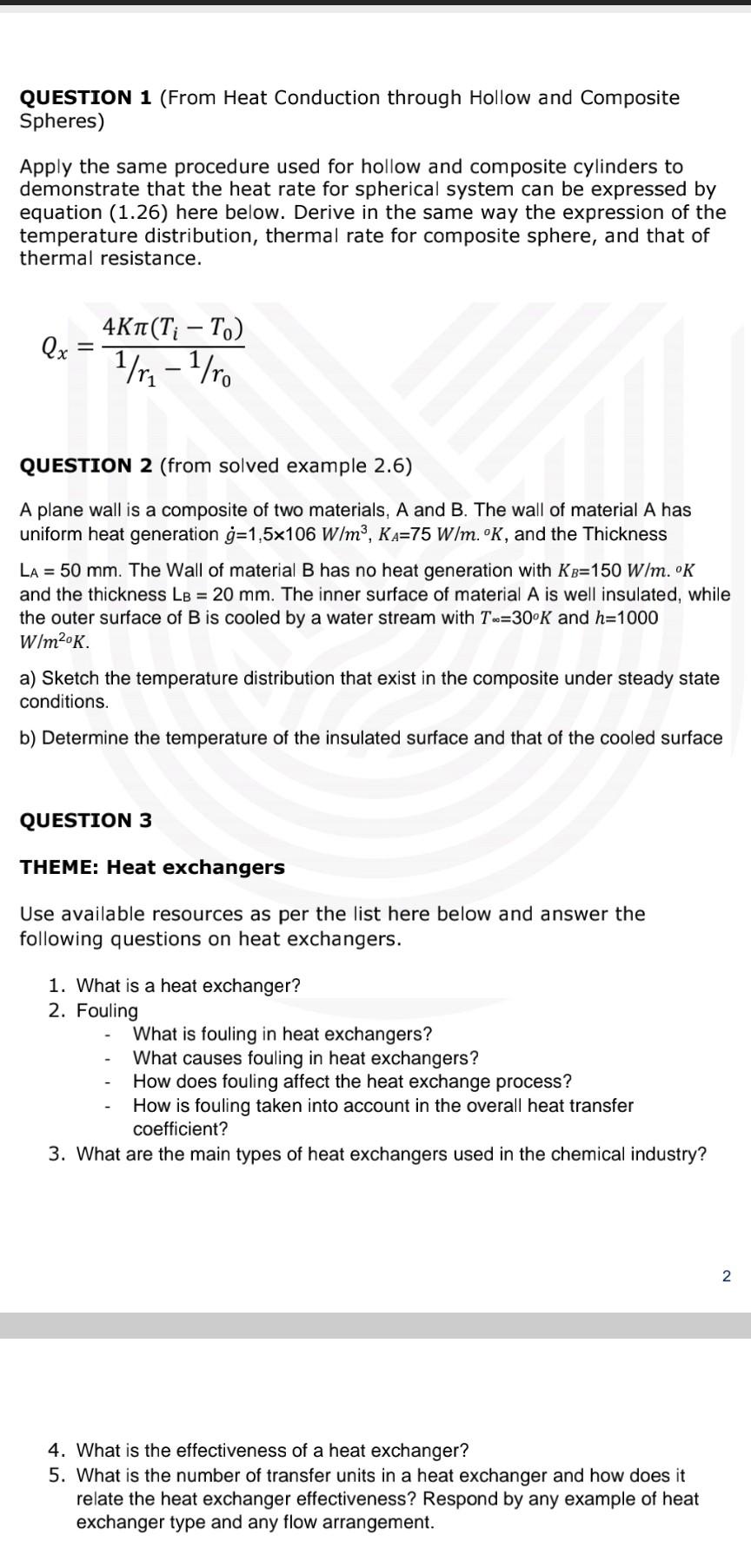Answered step by step
Verified Expert Solution
Question
1 Approved Answer
QUESTION 1 (From Heat Conduction through Hollow and Composite Spheres) Apply the same procedure used for hollow and composite cylinders to demonstrate that the heat

QUESTION 1 (From Heat Conduction through Hollow and Composite Spheres) Apply the same procedure used for hollow and composite cylinders to demonstrate that the heat rate for spherical system can be expressed by equation (1.26) here below. Derive in the same way the expression of the temperature distribution, thermal rate for composite sphere, and that of thermal resistance. Qx=1/r11/r04K(TiT0) QUESTION 2 (from solved example 2.6) A plane wall is a composite of two materials, A and B. The wall of material A has uniform heat generation g=1,5106W/m3,KA=75W/mK, and the Thickness LA=50mm. The Wall of material B has no heat generation with KB=150W/m.K and the thickness LB=20mm. The inner surface of material A is well insulated, while the outer surface of B is cooled by a water stream with T=30K and h=1000 W/m2oK. a) Sketch the temperature distribution that exist in the composite under steady state conditions. b) Determine the temperature of the insulated surface and that of the cooled surface QUESTION 3 THEME: Heat exchangers Use available resources as per the list here below and answer the following questions on heat exchangers. 1. What is a heat exchanger? 2. Fouling - What is fouling in heat exchangers? - What causes fouling in heat exchangers? - How does fouling affect the heat exchange process? - How is fouling taken into account in the overall heat transfer coefficient? 3. What are the main types of heat exchangers used in the chemical industry? 5 4. What is the effectiveness of a heat exchanger? 5. What is the number of transfer units in a heat exchanger and how does it relate the heat exchanger effectiveness? Respond by any example of heat exchanger type and any flow arrangement
Step by Step Solution
There are 3 Steps involved in it
Step: 1

Get Instant Access to Expert-Tailored Solutions
See step-by-step solutions with expert insights and AI powered tools for academic success
Step: 2

Step: 3

Ace Your Homework with AI
Get the answers you need in no time with our AI-driven, step-by-step assistance
Get Started


